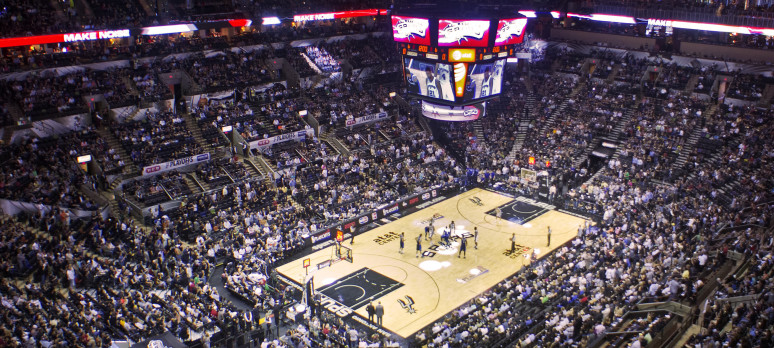With the NBA regular season coming to an end, it’s time to turn our attention to the postseason. The NBA Zig Zag Theory is a popular playoff betting system. It’s a simple strategy for betting the NBA playoffs that has provided consistent profits.
The premise is that you wager on the team to cover the spread that lost outright in the last game.
There’s two key principles in play. First, the team that loss the previous game will be more motivated in the next contest. Second, the oddsmakers will often shift the line in favor of the team that won the previous game.
Let’s see how valuable a tool this system is for your NBA handicapping arsenal.
What to Look for When Betting the NBA Zig Zag Theory in the Playoffs
Overall Record
| SU | ATS | O/U |
|---|---|---|
| 547-562 (49.3%) | 559-538-12 (51.0%) | 526-564-19 (48.3%) |
Going back to the 2002 season, this betting system has shown a tendency to cover. However, not at the level to where we could bet it blindly and expect a return on our investment.
The key was now to narrow down the variables to pinpoint the most profitable spots. Let’s take a look at the results.
Home Team: Off Loss
| SU | ATS | O/U |
|---|---|---|
| 378-234 (61.8%) | 316-287-9 (52.4%) | 278-322-12 (46.3%) |
The first thing I looked at was how home teams responded from a loss.
Most playoff caliber teams have a strong record on their home court. Regardless of the outcome of their last game, there’s going to be a slight edge on their home floor.
As I’m most of you are aware, home court advantage is huge in the playoffs. Teams simply can’t afford to lose at home, especially if they dropped the previous game.
As expected, the results increased in our favor. Teams playing at home off a loss have covered their next game 52.4% of the time. This definitely gives you an idea of what side to lean towards betting, but it’s not quite something you can bet blindly.
This is more the win rate I look for when I release a free pick, so it needed to be tightened up even further if it was going to be strong enough to be considered for premium members.
Home Team Off Loss: Margin of Defeat
| Margin of Loss | SU | ATS | O/U |
|---|---|---|---|
| More 3-points | 315-206 (60.5%) | 273-241-7 (53.1%) | 238-272-11 (46.7%) |
| 3-points or less | 63-29 (69.2%) | 43-46-2 (48.3%) | 40-50-1 (44.4%) |
The next thing I checked was how the margin of the loss impacted the likelihood of a team covering the spread.
It might surprise you that the larger the defeat the better. Teams who lost by more than 3-points, covered at a profitable 53% clip. On the flip side of this, teams off a loss by 3-points or less beat the spread just 48% of the time.
My guess is that it’s just a lot harder to bounce back after such a heartbreaking close loss. Either way your focus should be on teams who lost their last game by more than 3-points.
Win Percentage Matters
| Winning % | SU | ATS | O/U |
|---|---|---|---|
| 60% or more | 207-88 (70.2%) | 163-127-5 (56.2%) | 140-150-5 (48.3%) |
| Under 60% | 108-118 (47.8%) | 110-114-2 (49.1%) | 98-122-6 (44.5%) |
Knowing that there’s a big difference based on the margin of victory. I only looked at home teams that loss by more than 3-points when looking at win percentage.
It looks like the stronger the team the better the chance they cover the spread next time out.
Teams who won 60% or more of their games have covered 56.2% of the time after a loss by more than 3-points. Teams who won less than 60% of the contests only covered the spread just 49.1% of the time.
Performance by Numbers
| Spread | SU | ATS | O/U |
|---|---|---|---|
| Underdog | 22-26 (48.9%) | 23-24-1 (48.9%) | 22-26 (45.8%) |
| Pick to -2.5 | 17-16 (51.5%) | 14-19 (42.4%) | 11-21-1 (34.4%) |
| -3 to -4.5 | 35-15 (70.0%) | 29-20-1 (59.2%) | 24-25-1 (49.0%) |
| -5 to -5.5 | 37-15 (71.2%) | 26-25-1 (51.0%) | 29-23 (55.8%) |
| -6 to -9 | 77-15 (83.7%) | 56-34-2 (62.2%) | 43-46-3 (48.3%) |
| -9.5 or More | 19-1 (95.0%) | 15-5 (75.0%) | 11-9 (550%) |
The last step was to take a look at performance based on the actual spread for the game. Note that we are only looking at teams that have won 60% or more of their games, playing at home, and off a loss by more than 3 points.
To avoid a massive table, I grouped together key sets of numbers. As you can see big favorites have done extremely well.
While favorites of -3 to -4.5 have hit 59.2% of the time, the primary focus needs to be on teams that are favored by 6 or more, as they have gone 71-39-2, which comes out to a profitable 65% win rate.
Another Key to Handicapping the NBA Postseason Zig-Zag Theory
Overall Record: Road Team Off Road Loss
| SU | ATS | O/U |
|---|---|---|
| 104-214 (32.7%) | 146-169-3 (46.3%) | 166-146-6 (53.2%) |
We spent a lot of time looking at how home teams performed off a loss and were able to come up with a pretty solid system. However, I wanted to inform you of a scenario where the Zig-Zag Theory hasn’t performed well. Road teams off a road loss have covered the spread just 46.3% of the time.
Performance By Numbers
| Spread | SU | ATS | O/U |
|---|---|---|---|
| +4 or More | 53-142 (27.2%) | 98-97 (50.3%) | 99-93-3 (51.6%) |
| -3.5 to +3.5 | 35-65 (35.0%) | 34-64-2 (34.7%) | 56-41-3 (57.7%) |
| -4 or More | 16-7 (69.6%) | 14-8-1 (63.6%) | 11-12 (47.8%) |
As you can see from the table above, you don’t want to simply bet against every road team off a road loss.
Road teams off a road loss that are listed at +3.5 to -3.5 have only covered 34.7% of the time. On the flip side of this, if they are favored by 4 or more they have hit at 63.6% clip.
If you are going to beat the NBA odds consistently then this is the amount of work that it requires. You dig in and do your homework to find profitable systems and situations. If you don’t want to put the time in yourself, I encourage you to sign up for one of my premium subscriptions.
Other Playoff Articles:


